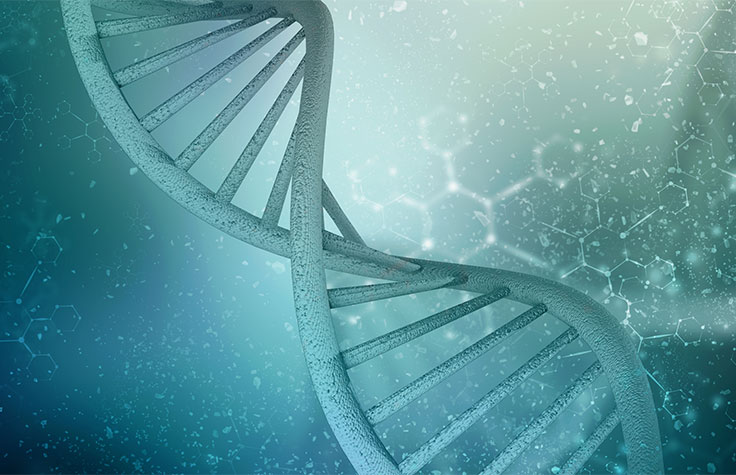Next-Generation Sequencing and the Fight Against COVID-19
In the summer of 2020, COVID-19 vaccines were still in development when six emergency department staff members at Cleveland’s Louis Stokes VA Medical Center tested positive for the novel coronavirus (SARS-CoV-2). All of these staff members had taken extreme care to wear appropriate PPE gear while working directly with patients, but they took fewer precautions when sharing a common office area and break room. As medical professionals strove to determine if and how these six individuals may have infected one another, they came to realize that only virial RNA sequencing could give them the answers they sought.
Fast and effective for basic SARS-CoV-2 detection, standard RT-PCR coronavirus testing works by identifying regions of the viral genome that contain known sequences. However, new genetic variants of the virus will, by definition, contain segments of DNA that are yet unknown.
To distinguish and describe new genetic variants with no understanding of where they might be located within the viral genome, scientists must sequence the genome in its entirety. This is when next-generation sequencing (NGS) becomes essential.
NGS offers an efficient and accurate way to identify new pathogens that include variants of the coronavirus that have yet to be discovered. Considering the devastating effects of fast-spreading SARS-CoV-2 strains such as the Delta variant and the Omicron variant, the need for clinical researchers to detect viral mutations quickly has received new urgency. Scientists agree that the early and precise detection of new coronavirus variants is the key to preventing their spread and the worsening of the global COVID-19 pandemic.
In addition to allowing public health officials to track the transmission routes of evolving SARS-CoV-2 strains around the world, next generation sequencing helps laboratory researchers and both vaccines and pharmaceutical developers identify viral mutations that might diminish the effectiveness of molecular diagnostic assays and the potency of existing vaccines. NGS also plays a pivotal role in the screening of targets for potential COVID-19 treatments and the characterization of antimicrobial resistance alleles as well as respiratory co-infections.
As epitomized by the Cleveland VA Medical Center case, next generation sequencing is the key to tracing local outbreaks of unique viral variants back to their origins. By determining the source of local outbreaks, officials dramatically increase the overall chances of containment.
Case Western Reserve University researchers Peter Zimmerman and Curtis Donskey used next generation sequencing to map the entire genome of the SARS-CoV-2 pathogens in each infected staff member of the Cleveland VA Medical Center emergency room. Because the SARS-CoV-2 genome mutates quite rapidly, Zimmerman and Donskey hypothesized that each genome sequence would be different and, furthermore, that the differences among them would point to the original source of the outbreak. NGS allowed the researchers to sequence entire coronavirus genomes quickly and effectively.
Zimmerman and Donskey discovered that five of the six infected staff members had coronavirus genomes that were significantly closer to one another than to coronavirus genomes isolated from hospital patients at the time of the outbreak. Marrying state-of-the-art NGS with straightforward contact tracing, the researchers determined that the emergency department staff had not gotten sick from patients. Rather, they had infected one another by using common office workstations and sharing the same restricted space during their breaks.
After seeing similar techniques achieve similar findings during a previous study, Peter Zimmerman was unsurprised by the final results of the Cleveland VA Medical Center emergency case. He sees a tremendous amount of potential in the power of NGS methods to trace the sources of local outbreaks while detecting new variants and monitoring those that we already know.




